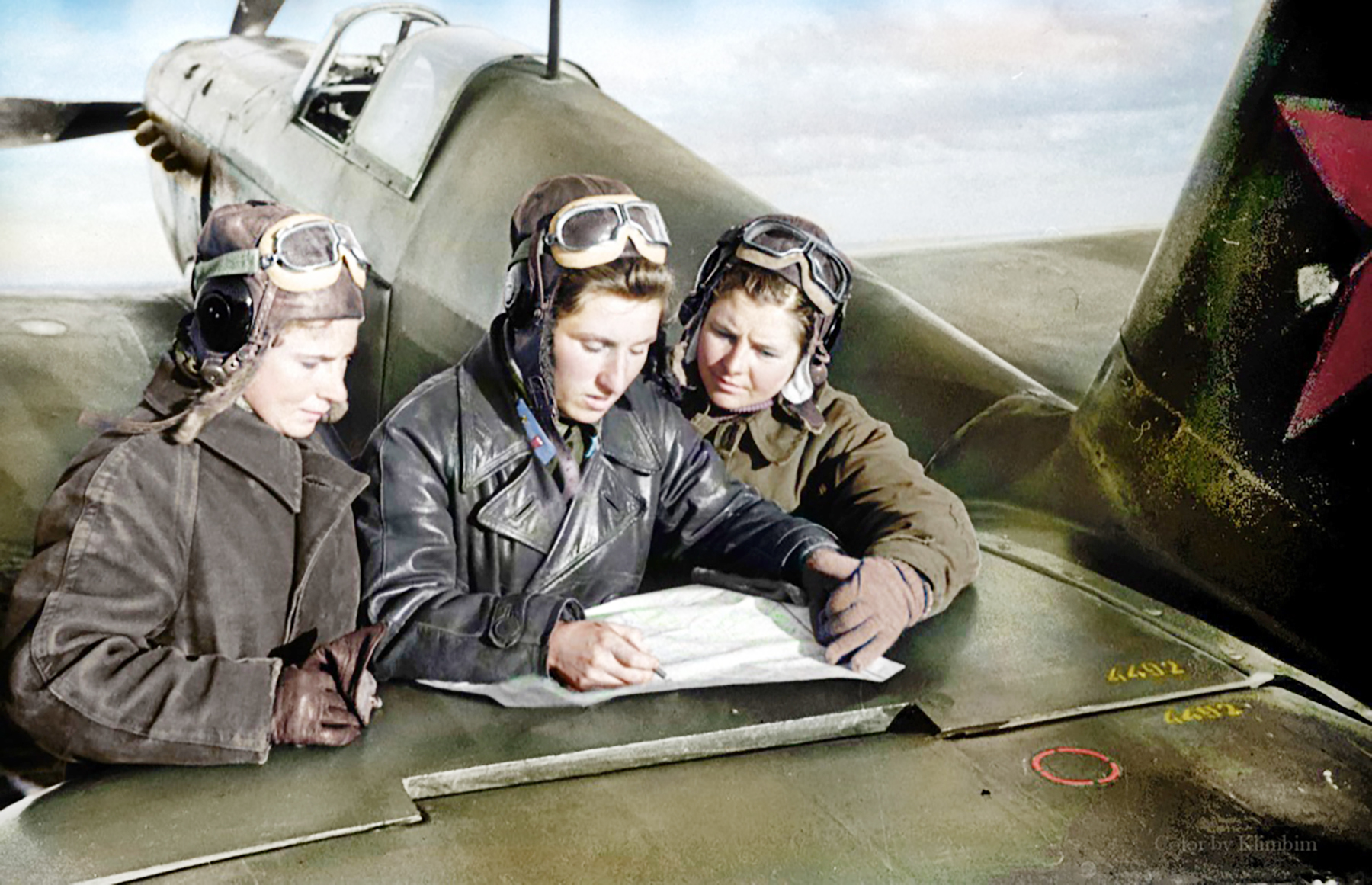Yakovlev Yak-1
National origin:- Soviet Union Role:- Fighter Manufacturer:- Yakovlev OKB Designer:- First flight:- 13th January 1940 Introduction:- 1940 Status:- Retired 1950 Produced:- 1940-1944 Number built:- 8,700 Primary users:- Soviet Air Force Variants:- Yakovlev Yak-3; Yakovlev Yak-7; Yakovlev Yak-9; Yakovlev Yak-11; Yakovlev Yak-15 The Yakovlev Yak-1 (Russian: Яковлев Як-1) was a Soviet fighter aircraft of World War II. The Yak-1 was a single-seat monoplane with a composite structure and wooden wings; production began in early 1940.
The Yak-1 was a manoeuvrable, fast and competitive fighter aircraft. The composite-wooden structure made it easy to maintain and the engine proved to be reliable. It formed the basis for subsequent developments from the Yakovlev bureau. It was the founder of a family of aircraft, with some 43,000 being built. As a reward, designer Alexander Yakovlev was awarded the Order of Lenin (Russian Орден Ленина, Orden Lenina) (the highest civilian decoration bestowed by the Soviet Union), a 100,000 ruble prize, and a ZIS motor car.
Operational history
At the time of Operation Barbarossa on 22 June 1941, 425 Yak-1s had been built, although many were en route or still incomplete. 92 machines were fully operational in the Western Military Districts but most were lost in the first days. The Yak-1 was built as an escort fighter for Il-2 tactical bombers and combats took place below 4,000 m (13,000 ft), where the Yak-1 performed the best. The Yak-1 proved to have a significant advantage over its Soviet competitors. A full circle turn took just 17 seconds in the Yak-1M. The MiG-3, which had the best high-altitude performance, did poorly at low and medium altitudes and its light armament made it unsuitable for ground attack. The LaGG-3 experienced a significant degradation in performance (as much as 100 km/h (62 mph) on some aircraft) compared to its prototypes due to the manufacturer's inexperience with its special wooden construction, which suffered from warping and rotting when exposed to the elements. The Yak-1's plywood covering also suffered from the weather, but the steel frame kept the aircraft largely intact.
Early aircraft suffered from fuel leaks, spot-welded fuel tanks failing from vibration. The canopy could not be opened under certain conditions in earlier models and some pilots had the sliding portion of the canopy removed. The first 1,000 Yak-1s had no radios; wireless equipment became common by spring 1942 and obligatory by August 1942 but Soviet radios were notoriously unreliable and short-ranged, so they were frequently removed to save weight. The M-105 could not tolerate negative G forces which starved it of fuel and suffered from breakdowns of magnetos, speed governors and emitted oil from the reduction shaft.
The Yak-1 was better than the Bf 109E but inferior to the Bf 109F - its main opponent - in rate of climb at all altitudes, although it could complete a circle at the same speed (20-21 seconds at 1,000 m (3,300 ft)). The Bf 109, with its automatic wing slats, had a lower stall speed and was more stable in sharp turns and vertical aerobatic figures. A simulated combat between a Yak (with M-105PF engine) and a Bf 109F revealed that the Messerschmitt had only marginally superior manoeuvrability at 1,000 m (3,300 ft), though the German fighter could gain substantial advantage over the Yak-1 within four or five nose-to-tail turns. At 3,000 m (9,800 ft), the capabilities of the two fighters were nearly equal, as combat was essentially reduced to head-on attacks. At altitudes over 5,000 m (16,000 ft), the Yak was more manoeuvrable. The engine's nominal speed at low altitudes was lowered to 2,550 rpm, and the superiority of the Bf 109F at these altitudes was reduced.
The Yak-1's armament would be considered too light by Western standards but was typical of Soviet aircraft, pilots preferring a few guns grouped on the centerline to improve accuracy and reduce weight. Wing guns were rarely used on Soviet fighters and when they were supplied, they were often removed (as they were from US-supplied Bell P-39 Airacobras). Avoiding wing guns reduced weight and demonstrably improved roll rates (the same was true of the Bf 109F). The US and Britain considered heavy armament and high performance necessary, even at the cost of inferior manoeuvrability, while the Soviets relied on the marksmanship of their pilots coupled with agile aircraft. Even with the Yak-1's light armament, to reduce weight, modifications were made on the front line and on about thirty production aircraft: the 7.62 mm ShKAS machine-guns were removed, retaining only the single ShVAK cannon. Nevertheless, these lighter aircraft were popular with experienced pilots, for whom the reduction in armament was acceptable and combat experience in November 1942 showed a much improved kill-to-loss ratio. In the autumn of 1942, the Yak-1B appeared, with the more powerful M-105P engine and a single 12.7 mm UBS machine gun instead of the two ShKAS. Although this did not increase the total weight of fire much, the UBS machine-gun was much more effective than the two 7.62 mm ShKAS. The simple VV ring sight replaced the PBP gun-sight because of the very poor quality of the latter's lenses. The Yak-1 had a light tail, and it was easy to tip over and to hit the ground with the propeller. Often, technicians had to keep the tail down, which could lead to accidents, with aircraft taking off with technicians still on the rear fuselage.
 Editor for Asisbiz: Matthew Laird Acred
Editor for Asisbiz: Matthew Laird Acred
If you love our website please add a like on facebook
Please donate so we can make this site even better !!
This webpage was updated 2nd September 2021
-xxx-
